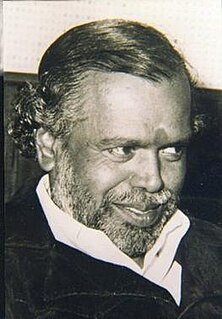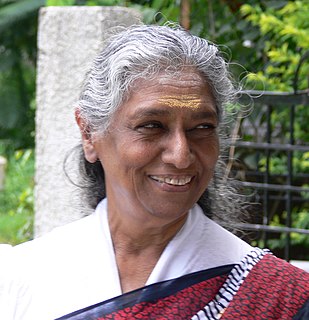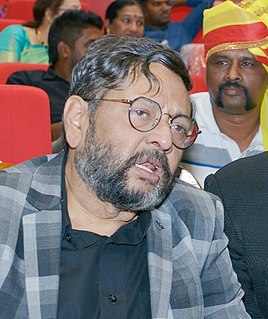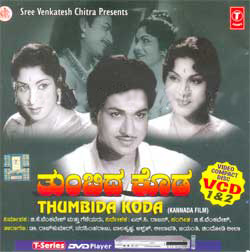This article needs additional citations for verification .(September 2012) |

Amarashilpi Jakanachari was a legendary Indian sculptor credited with building many fine temples for the Kalyani Chalukyas and Hoysalas.[ citation needed ]
This article needs additional citations for verification .(September 2012) |

Amarashilpi Jakanachari was a legendary Indian sculptor credited with building many fine temples for the Kalyani Chalukyas and Hoysalas.[ citation needed ]


Jakanachari was born in a small village called Kaidala, 9 km from Tumkur in Karnataka. The original name of the town as per records was Kridapura. His life was one of love and dedication to art. His career began when Nripa Haya ruled as a local chieftain of the area. [ citation needed ] He left home shortly after his marriage seeking fame in his field of work. He travelled far and wide building many temples and became so engrossed in his work that he forgot all about his wife.

Jakanachari's wife gave birth to his child, named Dankanacharya. Dankanacharya himself grew up to become a famous sculptor and set out to find his father. At Belur, he found a job as a sculptor and noticed a flaw in a figure sculpted by the great Jakanacharya himself. Dankanacharya told Jakanacharya that the stone which he was carving had a toad living inside which was a considered to be a flaw by the sculptors. Furious at this, Jakanacharya challenged to cut off his right hand if the young sculptor was correct in his assessment of the sculpture. Dankanacharya chiselled the place where the flaw was present and a toad jumped out with a little water flowing from that spot. Upon testing the figure, the flaw was indeed revealed and Jakanacharya kept his promise and cut off his right hand but Dankanacharya insisted not to do so. [1] Eventually, the two sculptors become aware of their relationship as father and son.

Subsequently, Jakanacharya received a vision to build the Chennakeshava temple in his native place Kridapura. After this was completed, legend has it that God restored his right hand. In celebration of this incident, Kridapura was henceforth called Kaidala. The term Kai in Kannada means "hand". [1] Local non-government organizations in the state of Karnataka have been trying to raise funds to protect the Chennakeshava temple at Kaidala.
The government of Karnataka confers the Jakanachari Awards to talented sculptors and craftsmen from the state every year to celebrate the contributions of this legendary architect. [ citation needed ]
In 1964, a Kannada biographical film about him, Amarashilpi Jakanachari starring Kalyan Kumar was produced. The veteran cinematographer BS Ranga was instrumental in the making of this movie, the first Kannada colour movie. [2] Also in 1964, a Telugu remake of the movie titled Amara Silpi Jakkanna starring Akkineni Nageswara Rao and Saroja Devi was released to popular success.
The Kannada people or Kannadigas [IAST: Kannaḍigaru or Kannaḍadavaru] are a Dravidian ethno-linguistic group who trace their ancestry to the South Indian state of Karnataka in India and its surrounding regions. Kannada belongs to the Dravidian family of languages. Kannada stands among 30 of the most widely spoken languages of the world as of 2001.

Singanalluru Puttaswamaiah Muthuraj, better known by his stage name Dr. Rajkumar, was an Indian actor and singer who worked in Kannada cinema. Regarded as one of the greatest actors in the history of Indian cinema and a versatile actor, he is considered a cultural icon and holds a matinée idol status in the Kannada diaspora, among whom he is popularly called as Nata Saarvabhouma, Bangarada Manushya, Vara Nata, Gaana Gandharva, Rasikara Raja, Kannada Kanteerava and Rajanna/Annavru. He was honoured with Padma Bhushan in 1983 and Dadasaheb Phalke Award in 1995. He is the only lead actor to win National Award for singing. His 35 movies have been remade 58 times in 9 languages by 34 actors making him the first actor whose movies were remade more than fifty times and the first actor whose movies were remade in nine languages. On the occasion of the "Centenary of Indian Cinema" in April 2013, Forbes included his performance in Bangaarada Manushya on its list of "25 Greatest Acting Performances of Indian Cinema". Upon his death, The New York Times had described him as one of India's most popular movie stars.

Prathivadi Bhayankara Sreenivas was an Indian playback singer and lyricist who has sung predominantly in Kannada and other languages such as Tamil, Telugu, Malayalam, Tulu, Konkani and Hindi.

Shubraveshti Ramaswamiah Seetharama Sharma, known popularly as S. R. Puttanna Kanagal, was an Indian filmmaker known for his work in Kannada cinema. He is often considered one of Kannada cinema's most influential filmmakers.

Sampath Kumar, known by his stage name Vishnuvardhan, was an Indian actor predominantly in Kannada cinema. He is widely regarded as one of the most influential actors in the history of Indian cinema. A popular cultural icon of Karnataka. Vishnuvardhan is often referred to as Sahasa Simha and The Angry Young Man of Kannada Cinema. He appeared in more than 220 films all together in Kannada, Hindi, Malayalam, Tamil and Telugu. He was called The Phoenix of Indian Cinema. He made his debut in the 1972 National Award winning film, Vamsha Vriksha, in a supporting role. The same year he played the lead role in Puttanna Kanagal's Naagarahaavu, which was his breakthrough. He has played a variety of roles in different genres.

Halasi is a town in Khanapur Taluk, Belgaum District in Karnataka, India. It is 14 km from Khanapur and about 25 km from Kittur. As known from inscriptions, the ancient name of the town was Palāśikā. A centre of the early Kadamba Dynasty, it was a minor capital of the Goa Kadambas (980-1025). The town is notable for a series of medieval temples. The most famous are the Varāha Narasiṃha temple and Suvarṇeśvara temple in the town, and a third temple of Rāmeśvara. On a hill about 1.9 km. south-west of the town is a pilgrimage place known as Rāmatītha. There is also a Jain temple in Halasi as well as mosques and tombs, most notably the Dargah of Hazrat Nūr al-Dīn Shāh Qadri. The Eidgah is located south of the town.

Sadali is a hobli headquarters in Chikballapur district, Karnataka, India. It is located at a distance of about 100 km from Bangalore. It is equidistant from five taluk headquarters: Sidlaghatta, Chintamani, Bagepalli, Gudibanda and Chikballapur.

Gangaraju, professionally known as Hamsalekha, is an Indian film composer and a songwriter who works in South Indian cinema, predominantly in the Kannada film industry since the late 1980s. He is also a screenplay writer, dialogue writer, instrumentalist and a conductor, composed and written for over 500 feature films. Also regarded as one of the greatest music composers of all time in history.

Sistla Janaki is an Indian playback singer and occasional music composer from Andhra Pradesh. She is referred to respectfully as "Janaki Amma" and Nightingale of South India. She is one of the best-known playback singers in India. She is referred to as 'Isaikkuyil' in Tamil Nadu and 'Gaana Kogile' in Karnataka. She has recorded over 48,000 songs in films, albums, TV and Radio which includes solos, duets, chorus and title tracks in 17 languages including Telugu, Kannada, Tamil, Malayalam, Hindi, Sanskrit, Odia,Tulu, Urdu, Punjabi, Badaga and also in foreign languages such as Japanese, German, and Sinhala. However the highest number of songs in her career were in Kannada, followed by Malayalam. Starting in 1957 with the Tamil film Vidhiyin Vilayattu, her career has spanned over six decades.
Kumara Rama is a revered as an historical figure in the history of Karnataka state and the inspiration for the establishment of the Vijayanagar Empire. Kumara Rama was the son of the chief Kampli Raya of Kampli or Kampli Kote. Kampli is a town in the Bellary district of Karnataka and it's a head quarter of Kampli Taluk. Harihara I and Bukka Raya I, the founders of great Vijayanagara Empire were the nephews of prince Kumara Rama. The mother of these two brothers was Maravve Nayakiti the elder sister of prince Kumara Rama.

The Gandaberunda or Berunda, or Bheruṇḍa is a two-headed bird in Hindu mythology, believed to possess immense magical strength. Later Vaishnava traditions hold it to be a form of Vishnu to fight Sharabha.

Narayana Swamy, known by his stage name Srinath, is an Indian actor and film producer who works predominantly in Kannada cinema. He holds the position of vice-president of the Kannada television channel Udaya TV. He is popular for presenting the Game Show, Adarsha Dampatigalu. Srinath has earned the nickname Pranaya Raja meaning 'King of Romance' because of his stupendous success in romantic movies during the 70s. In 2003, he was conferred the ‛Kalaratna’ Award by the Government of Karnataka.
The Jakanachari Award is a state award of Karnataka conferred on talented sculptors and craftsmen from the state. These awards are given away every year by the government of Karnataka to celebrate the contributions of the legendary sculptor Amarashilpi Jakanachari.

Ravi Belagere was an Indian writer and journalist based in Bangalore, Karnataka. He was the editor of the Kannada-language tabloid Hai Bangalore and fortnightly magazine O Manase. He founded Bhavana Prakashana, Prarthana School and Bhavana Audio Reach.

The name Karnataka is derived from Karunadu, meaning "lofty land" or "high plateau," due to its location on the Deccan Plateau. The name can also mean "land of black soil" in Kannada. The recorded history of Karnataka goes back to the Ramayana and Mahabharata epics. The capital of "Baali" and "Sugriva" referenced in the Ramayana is said to be Hampi. Karnataka is mentioned in the Mahabharata as "Karnata Desha." Historically, the region was also called "Kuntala Rajya."

Kalyan Kumar was an Indian actor, and an occasional film director and producer who worked primarily in Kannada and Tamil cinema. Making his acting debut in the mythological drama Natashekara (1954), Kalyan Kumar went on to star in over 200 films in a span of over five decades. He was among the much sought after actors in the 1950s through 1970s for lead roles.

Amara Silpi Jakkanna is a 1964 Telugu-language biographical film, produced and directed by veteran B. S. Ranga under the Vikram Studios banner. It stars Akkineni Nageswara Rao, B. Saroja Devi and music composed by S. Rajeswara Rao. Thespian Akkineni Nageswara Rao enacted the role of Amara Silpi Jakkanna, known for sculpting Kalyani Chalukyas and Hoysalas. This film is the first Eastmancolor production of Telugu cinema. In the song "Malligeya Hoovinantha", Jayalalithaa danced and the song is hailed as classic till date. This movie is a remake of director's own Kannada movie Amarashilpi Jakkanachari.

Shankar Guru is a 1978 Indian Kannada-language film directed by V. Somashekhar starring Rajkumar, Jayamala, Padmapriya and Kanchana. The supporting cast features Balakrishna, Vajramuni, Thoogudeepa Srinivas and Uma Shivakumar. Rajkumar appeared in a triple role in the film — as a father and his two sons separated in childhood.
Santha Shishunala Sharifa is a 1990 Indian Kannada biographical drama film directed and co-written by T. S. Nagabharana and produced by Srihari Khoday and Mahima Patel for Yajaman Enterprises. The story is based on the life of acclaimed saint poet Shishunala Sharif who wrote several moral poems striving towards social reformation. A collection of Sharif's poems are set to tunes by C. Ashwath, who also did the major playback singing. The soundtrack consisting of 16 poems was extremely popular upon release. The dialogues for this movie was written by Gopala Wajapayi, a well known theatre figure and translator of Bertolt Brecht's play The Caucasian Chalk Circle.

Thumbida Koda is a 1964 Indian Kannada-language film directed by N. C. Rajan and produced by G. K. Venkatesh & Friends. The film stars Rajkumar, Leelavathi, K. S. Ashwath, Narasimharaju and Balakrishna.